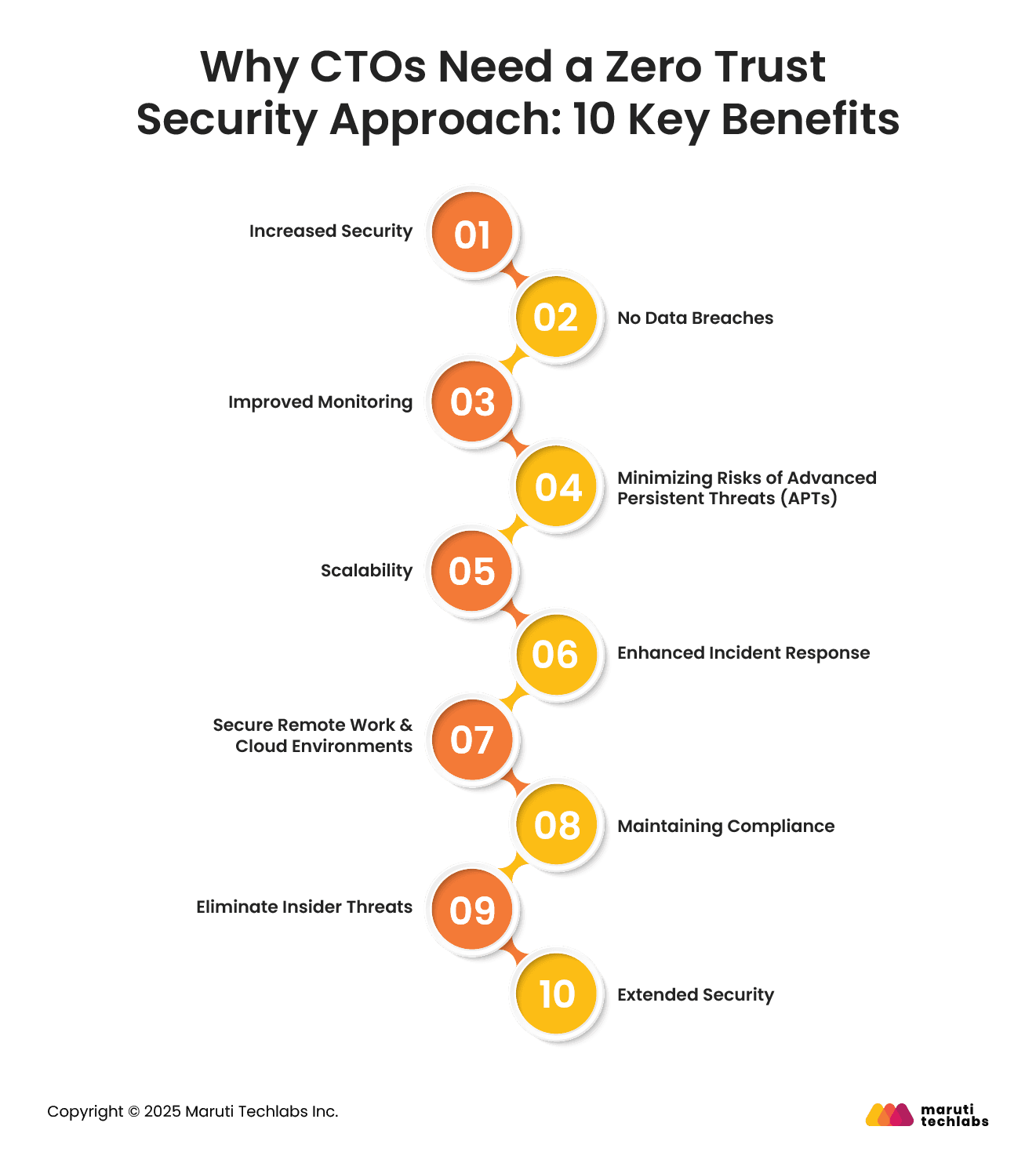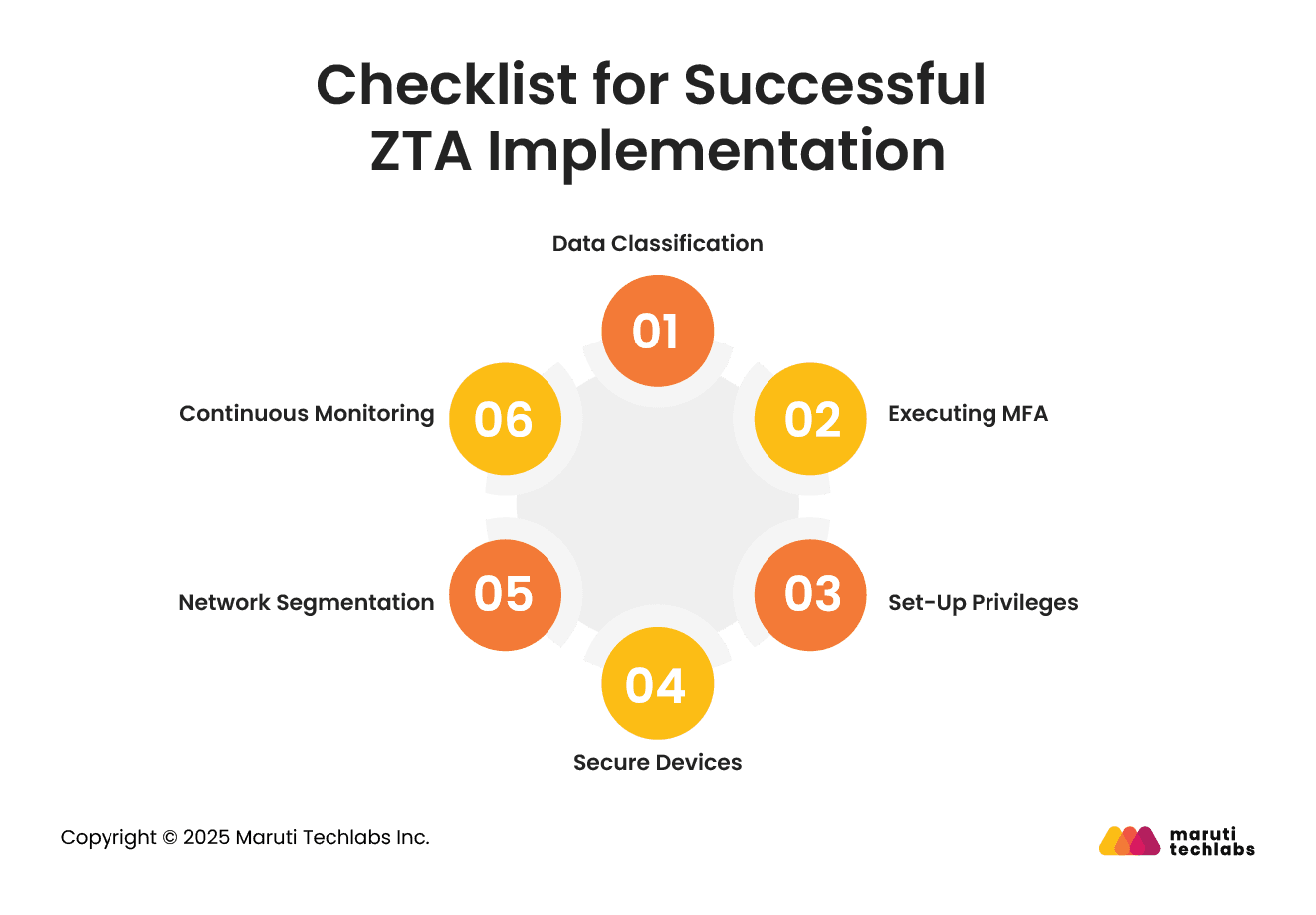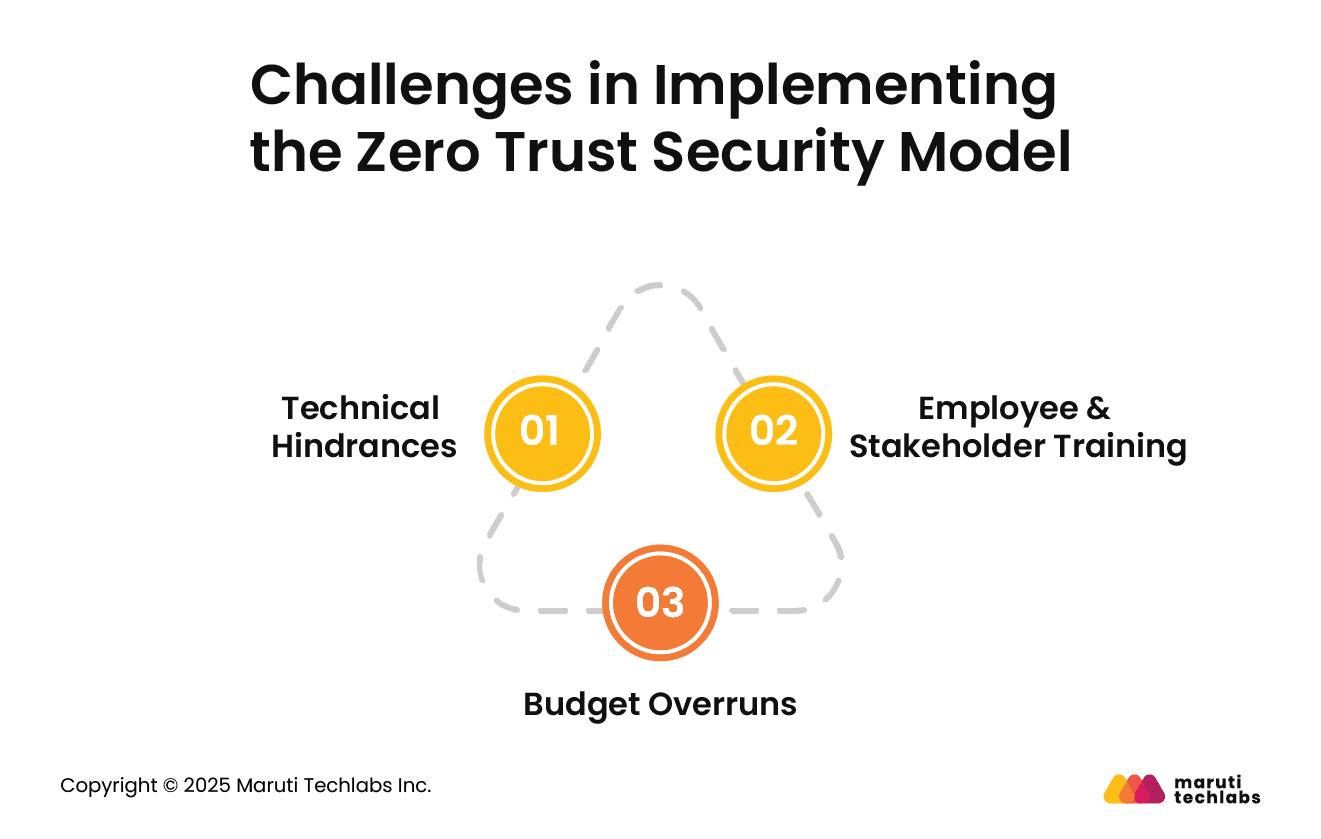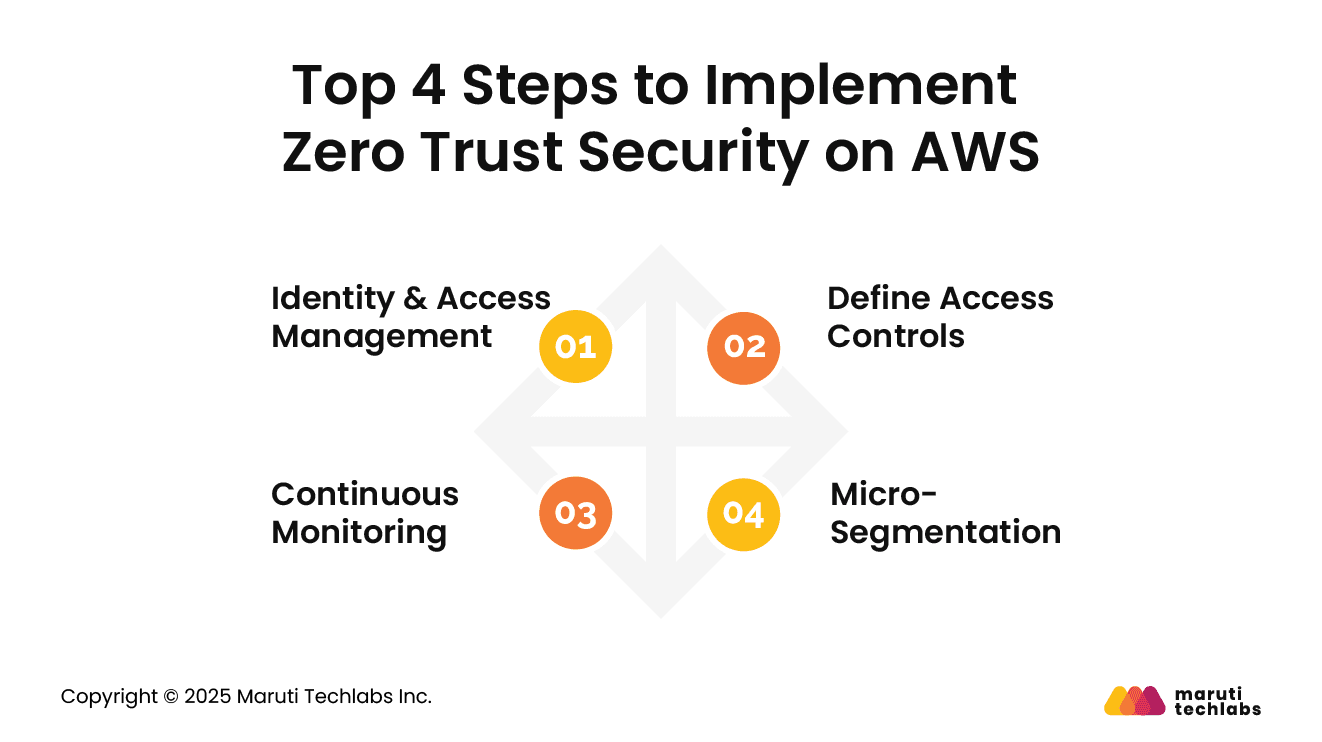

Implementing Zero Trust Security On AWS: What CTOs Must Know?






Traditional or perimeter security might have worked for legacy systems, but it doesn't offer the necessary protection against the evolving cloud landscape. With a widespread user base and high workloads, businesses today need a security model that relies on more than just network location to grant access.
According to an IBM report, 40% of data breaches involved data stored across multiple environments. The highest average breach cost was USD 5.17 million for breached data stored in public clouds.
Perimeter-based security approaches were adequate in an era when most business operations stayed within on-site networks and employees accessed systems from within the physical office environment. However, these practices don’t offer the necessary security when organizations have distributed teams working remotely.
When it comes to security, organizations need security practices that they can trust and always verify before allowing access. This is exactly what AWS Zero Trust Security architecture offers.
This blog focuses on the fundamentals of Zero Trust Security, including its definition, significance, benefits, and best practices for implementation.
Zero Trust Architecture (ZTA) observes a model that limits access to data based on a network’s location. It only allows identity-based authorization to applications, data, and other systems, requiring users to strictly prove their identities and establish trustworthiness.
“Never Trust, Always Verify” is a fundamental philosophy ZTA follows. It makes integrated access decisions based on interconnected data breaking down traditional security silos and leveraging identity and network capabilities. Here’s how it enhances security when compared with conventional practices.
Other use cases include managing work devices remotely, enhancing security for your primary business app, and restricting access to confidential data within your team.
The ZTA model offers improved security to businesses of all sizes without compromising their budget. A report from CSRB highly rates AWS’s approach to securing application programming interfaces (APIs) as a cybersecurity best practice.
The AWS Zero Trust approach has been one of the first offerings since its commencement. Today, the ZTA is an example for millions of customers. By implementing this, SMBs and enterprises can meet compliance requirements, protect their confidential data, and enhance their security posture.
Here are the top 10 benefits ZTA offers.
It limits access by executing least-privilege access. This means that devices and users can only access what is necessary. ZTA reduces the risk of insider and outsider threats by preventing unauthorized users from accessing the system using continuous authentication and authorization.
ZTA almost eliminates the risk of data breaches by demanding authorization at every step. It also limits attackers' lateral movement by not trusting anyone implicitly.
ZTA increases an organization’s visibility over network activities with continuous monitoring and logging. This facilitates better audit trails and effectively responds to threats.
Advanced persistent threats rely on moving undetected within a network. ZTA minimizes its impact by isolating network segments and verifying access at each level.
ZTA is suitable for businesses of all sizes and can easily accommodate an organization's growing devices, applications, and users.

ZTA enables more precise network control. This reduces incident response times by quickly identifying and isolating compromised resources.
It fosters distributed workforces and multi-cloud environments. ZTA allows users to access systems and data without compromising the security of other valuable resources.
ZTA seamlessly aligns with regulatory requirements such as HIPAA, PCI-DSS, and GDPR. It enforces strict access controls and multi-factor authentication, enhancing security by minimizing the attack surface.
Implementing strict access controls reduces instances and potential damage from insider threats. ZTA allows only the most essential but limited individuals to perform authorized functions.
ZTA facilitates authorized movement across networks to support stringent access control by employing software-defined perimeters and micro-segmentation. Users’ privileges are verified across different locations and continuously validated.
Transitioning to a ZTA model doesn’t mean rebuilding your security systems from scratch. This doesn’t disrupt the budget with ongoing operational costs, offering ample security benefits at a relatively low upfront investment.
Here are the top 6 things to do to reap the best results with Zero Trust.

Identify and classify your applications, data, and devices based on sensitivity.
Implement multi-factor authentication as a standard practice for all devices and user accounts, particularly those with privileged access.
Grant access to resources only as necessary for a particular user.
Adhere to device hygiene policies when implementing endpoint security solutions.
Limit lateral movement within your network in case of a data breach by dividing it into smaller zones.
Monitor network traffic and user activity every day, keeping an eye out for suspicious behavior.
Though Zero Trust is the best security model for protecting your online systems, executing it can be challenging. Let's examine these challenges briefly.

Transitioning to Zero Trust requires incorporating additional tools and technologies, such as orchestration tools, identity providers, and segmentation gateways. These tools and technologies are crucial for creating a cohesive system that operates efficiently across diverse IT environments.
Changes in your security model demand upgrading skills and knowledge to harness its true potential. This transition often encounters resistance from employees and stakeholders. Invest in training programs that help different departments of your organization understand the importance of making this change.
Switching to ZTA requires upfront investments in new technologies and employee training. Plan your budgets carefully to avoid overruns, especially if you are a large organization or have legacy systems in place.
Here are the steps to remember when implementing a zero-trust architecture on AWS.
IAM enforces the principle of least privilege, managing user identities and permissions and defining the conditions under which users can access specific resources. This principle allows users to use only the services they need—no more, no less.
Organizations can exercise fine-grained access controls in AWS based on device health, user, and other contextual indicators. For instance, AWS-verified access ensures that only authenticated users can use sensitive applications without a VPN.

A zero-trust model requires a timely assessment of device status and user behavior. This helps catch any anomalies in real-time. Tools like Amazon GuardDuty and AWS CloudTrail offer monitoring capabilities that can be used for this task.
Organizations can mitigate threats' lateral movements by dividing the network into smaller segments. This requires using tools like Amazon VPC Lattice and Security Groups to define specific communication pathways.
Traditional security models are unable to keep pace with modern threats. Zero Trust enforces strict access controls, assuming no user or device is inherently trustworthy, inside or outside the network.
Zero Trust helps protect against lateral movement during breaches in cloud environments like AWS. Continuous verification, micro-segmentation, and least privilege access make ZTA perfect for all-around
Maruti Techlabs assisted McQueen Autocorp, a leading U.S.-based used car seller, in migrating from a restrictive on-premise infrastructure to AWS cloud solutions. They faced challenges like scalability limitations and high maintenance costs. Our expats conducted a comprehensive SWOT analysis and executed a phased migration strategy. By leveraging Infrastructure as Code (IaC) and AWS managed services, we achieved enhanced scalability, significant cost savings, improved security, and uninterrupted performance, even during peak traffic periods.
CTOs must prioritize zero-trust frameworks as part of their cloud transformation. Relying solely on firewalls and VPNs is no longer sufficient, as modern threats require advanced defense strategies.
If you’re looking for cloud security services or CTO as a service, you have just come to the right place. Our experts at Maruti Techlabs can help you devise the ideal strategy to safeguard your cloud assets against cyberattacks and data breaches. Connect with us today to learn more about how ZTA can help your organization fight against cyber threats.
And if you’re searching for a trusted cloud application development company in Los Angeles, Maruti Techlabs can partner with you to design secure, scalable, and high-performance cloud solutions tailored to your business needs.
Zero Trust security means never automatically trusting anyone or anything, even inside your network. It constantly verifies users and devices before giving access, helping protect sensitive data from hackers, mistakes, or insider threats, irrespective of where people work.
AWS security architecture is a layered approach that protects cloud resources using identity controls, encryption, network segmentation, and continuous monitoring. It ensures secure access, data protection, and compliance across all AWS services and environments.
The five pillars of AWS security are identity and access management, detective controls, infrastructure protection, data protection, and incident response. Together, they help secure AWS environments by controlling access, monitoring threats, safeguarding data, and responding quickly to incidents.
Zero Trust architecture differs from traditional security in that it eliminates implicit trust. Traditional models assume users inside the network are safe, while Zero Trust verifies every access request regardless of location. It emphasizes continuous authentication, least privilege access, and segmentation, offering stronger protection in today’s cloud-based, remote, and hybrid environments.


